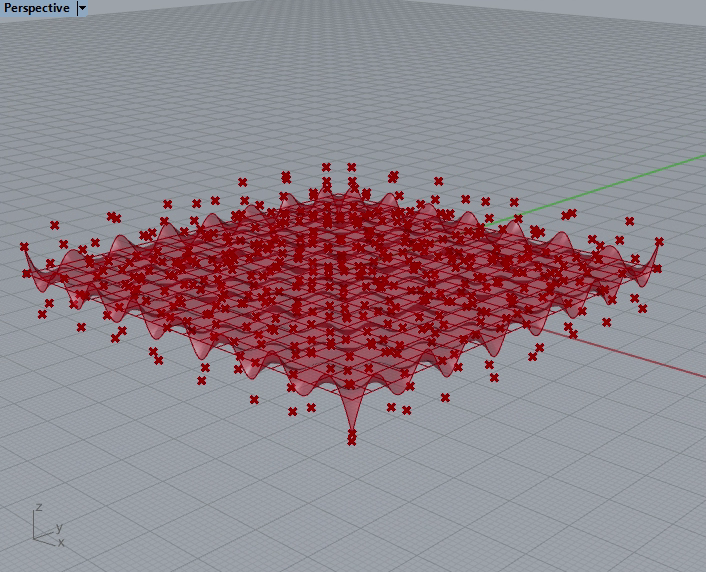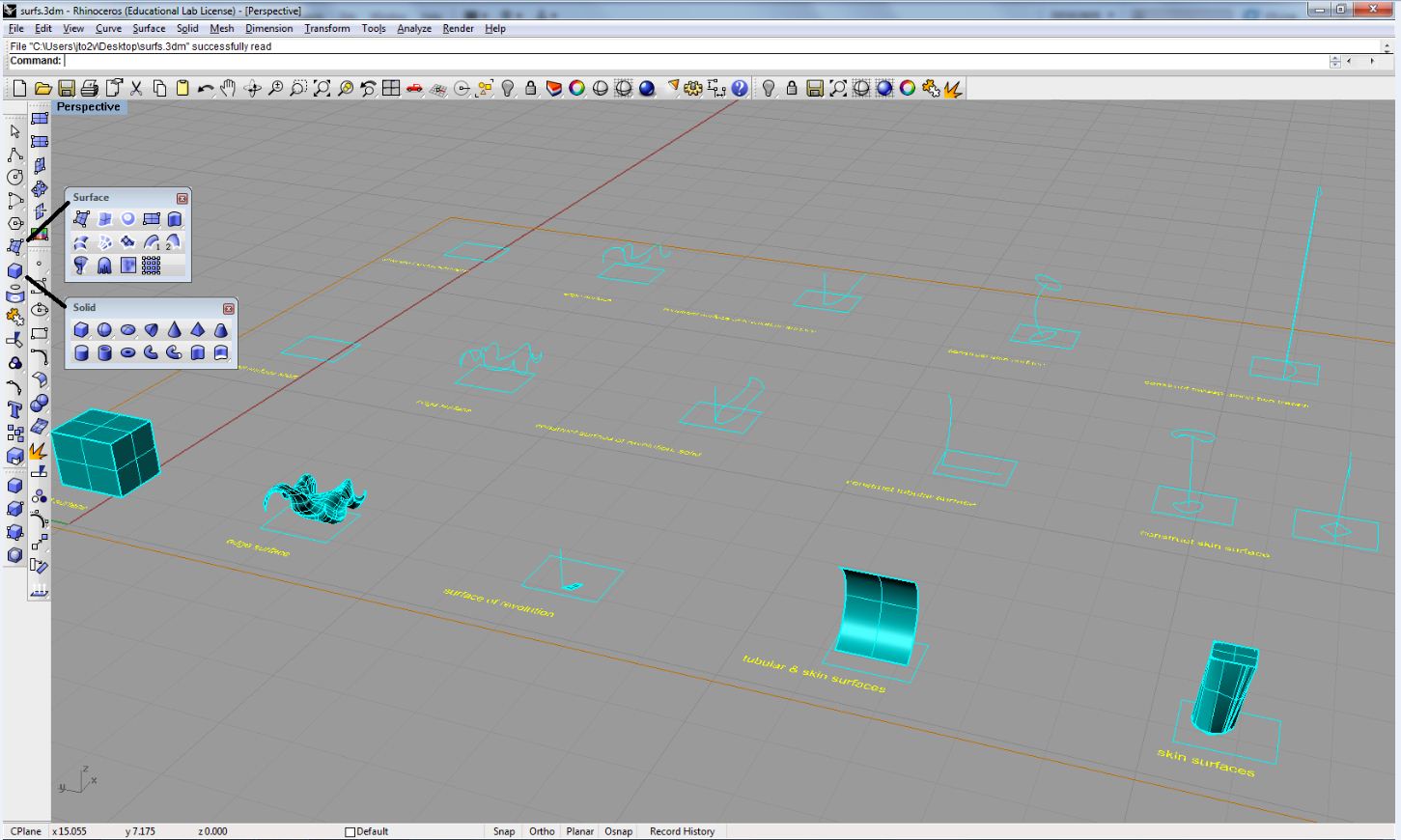
COMPUTER
AIDED ARCHITECTURAL DESIGN
Workshop 3 Notes, Week of September 4, 2023
SURFACES & CONSTRUCTION PLANES
1. SURFACES
Copy the file SARC-Classes\ARCH2710-Mark-FAL2023\Examples\surfaces\surfs.3dm onto your computer desktop. In the Main tool box, click and hold the surface icon to open up the Surface modeling tool box then click and hold the solids icon to open up the Solid modeling tool box, and use the tool specified in each case of a surface type entity as indicated below.

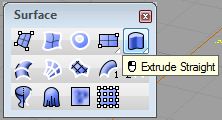
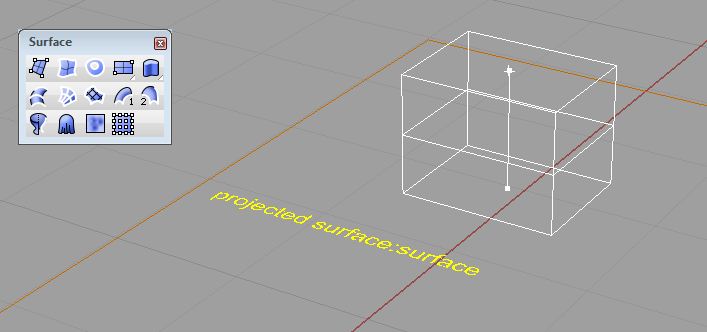
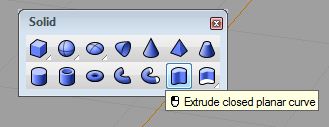
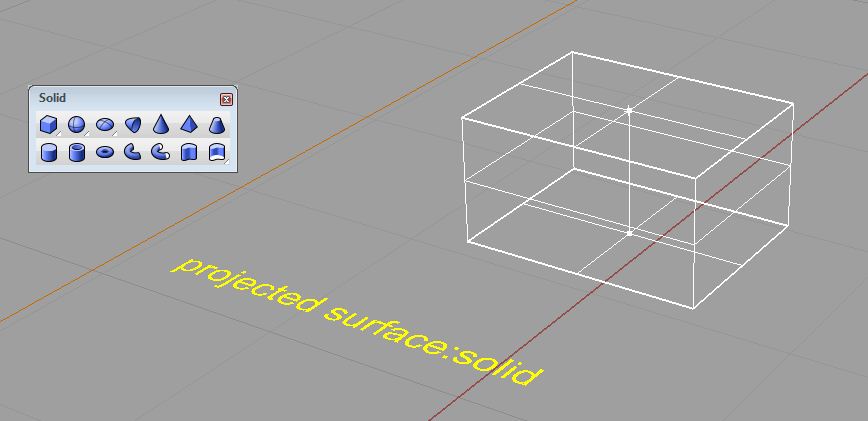
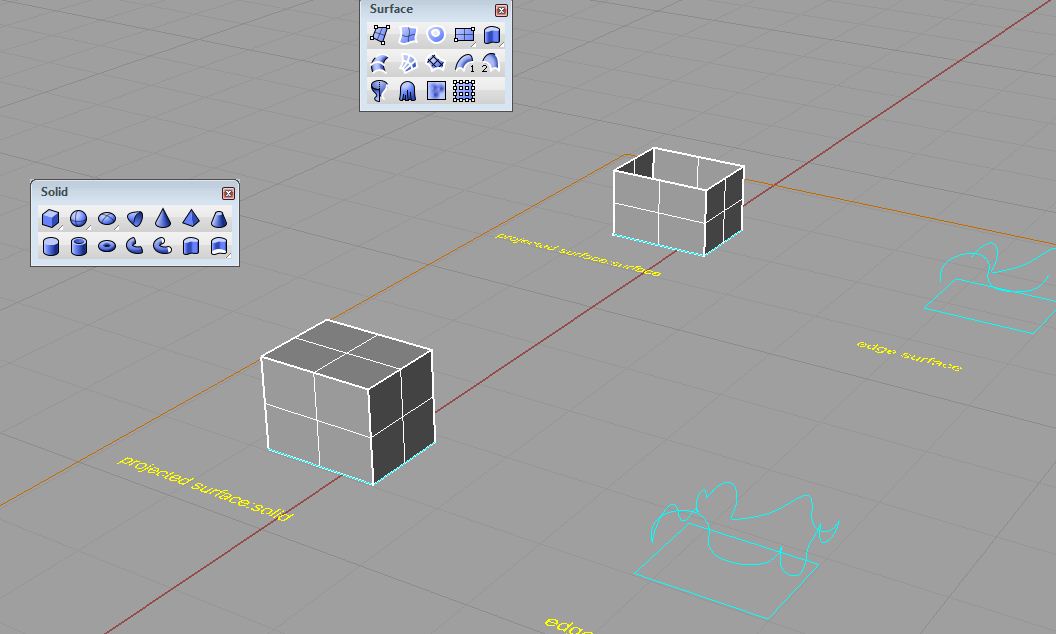
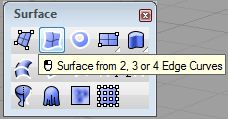
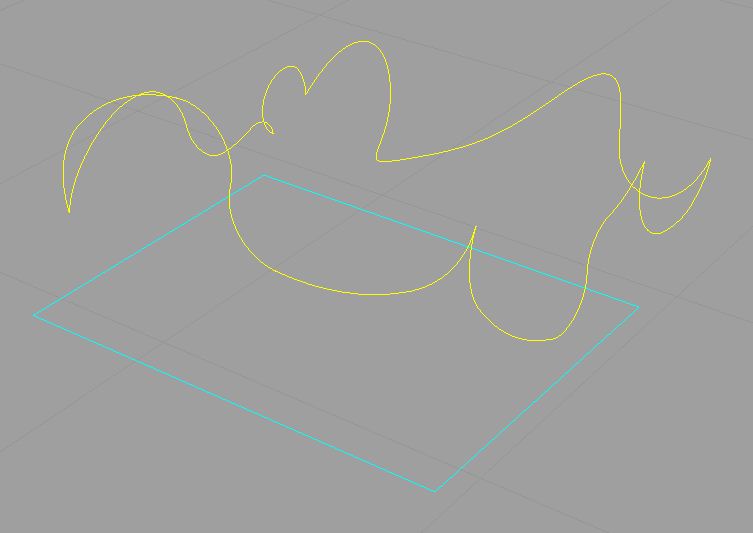 |
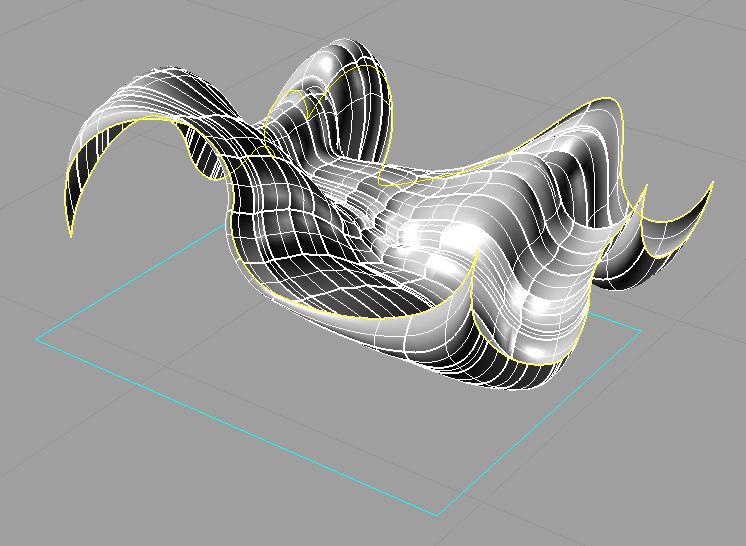 |
| select edges | generated edge defined surface |
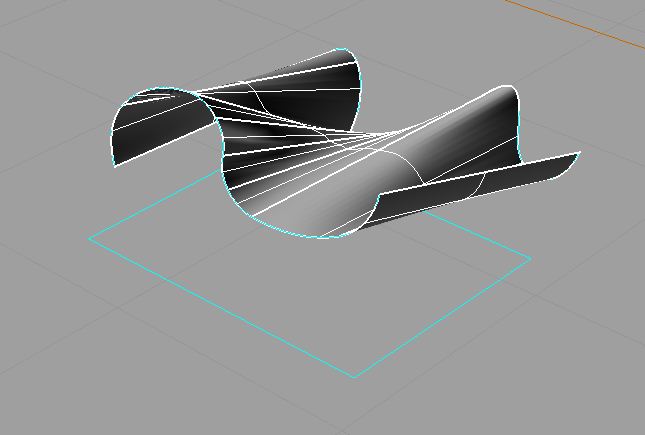
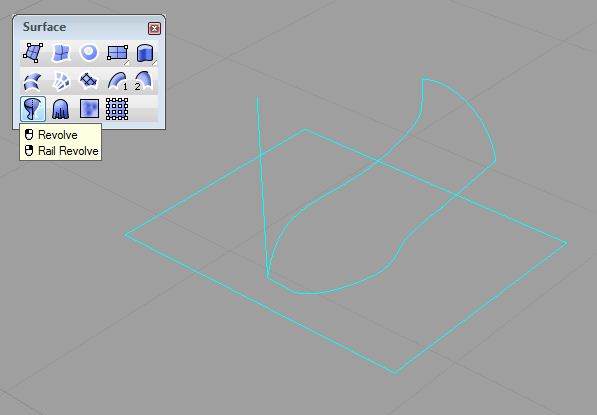 |
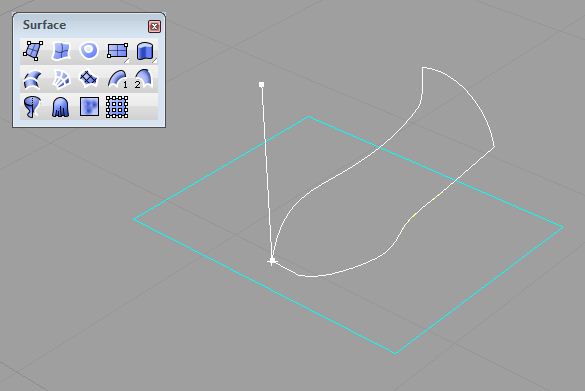 |
| Selecting Revolve from the Surface tool box. | Selecting the profile curve and then the bottom and top of the sweeping axis followed by enter to set the start angle. |
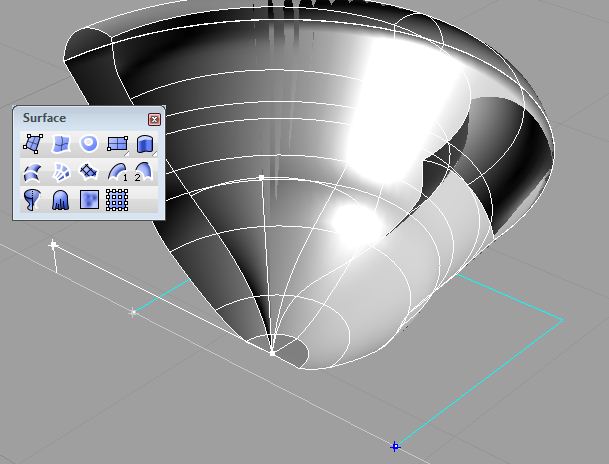 |
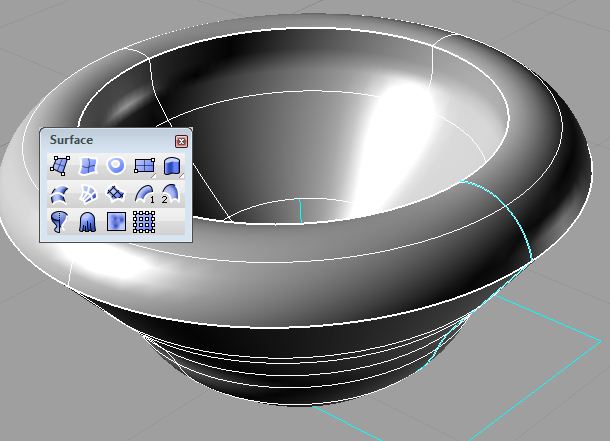 |
| Interactively sweeping the profile 180 degrees by moving the cursor (clicking now will create half the surface). | Pressing enter will automatically sweep the profile the full 360 degrees and complete the tool. |
 |
 |
| Selecting the profile curve and the upper and lower portion of the vertical then enter to create interactive sweep. | Pressing enter again sweeps out the full 360 degrees. |
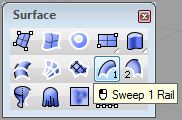
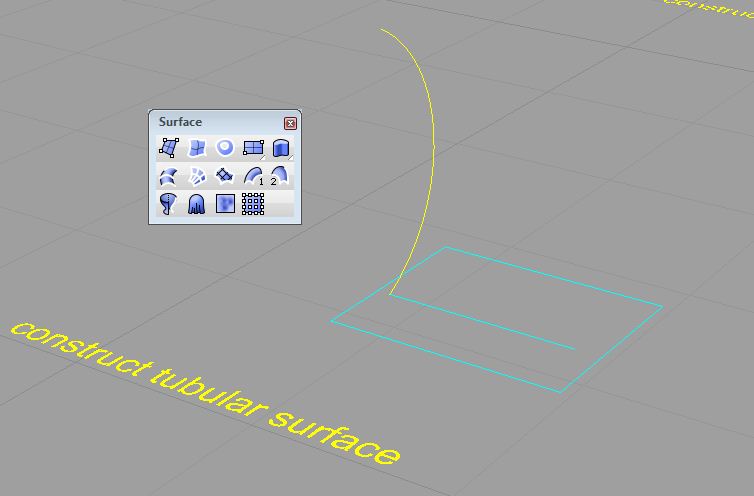 |
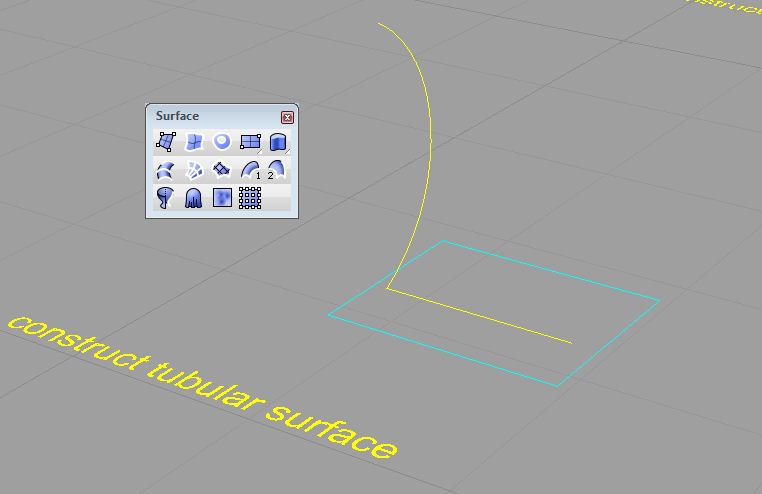 |
| Selecting the path curve first. | Selecting the profile curve on the ground second. |
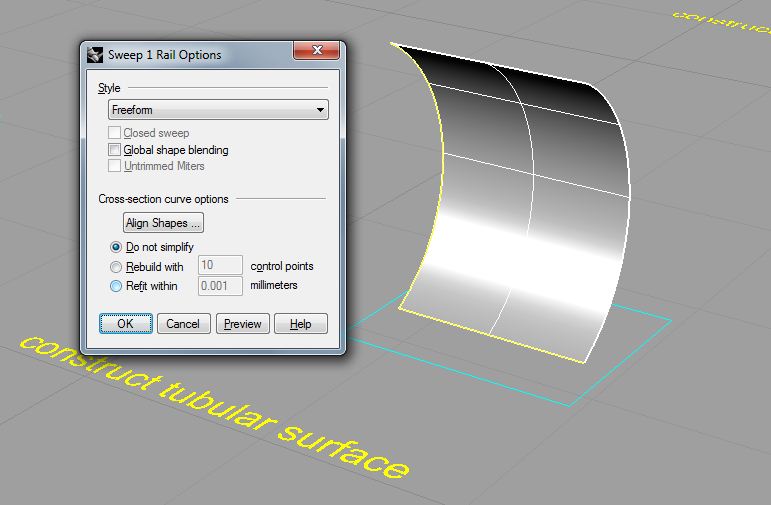 |
 |
| Pressing enter will bring up an options dialog box. | Keep the original settings and press OK to generate the surface. |

 |
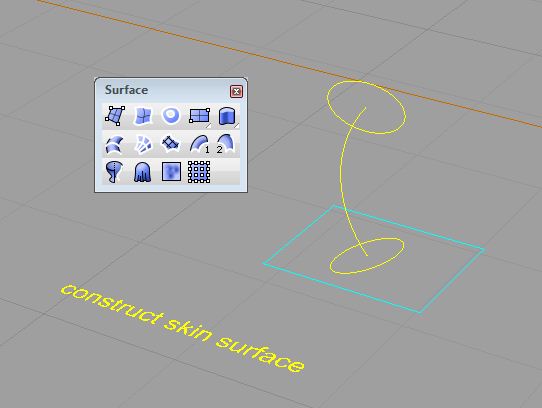 |
| The Sweep 1 rail icon is selected followed by the path curve | select the two profile curves |
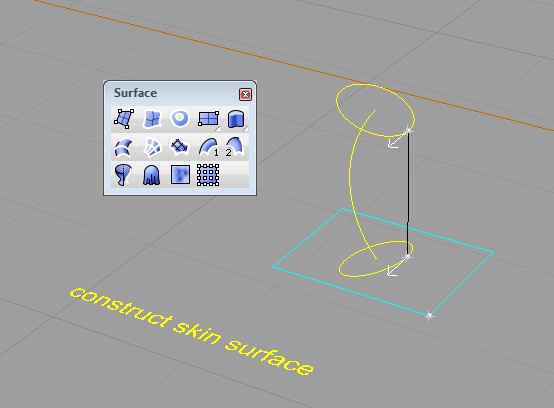 |
 |
| enter brings up the tool for adjusting the curve directions, make sure both arrows face the same direction. | enter again brings up the options dialog, press ok to complete the surface. |
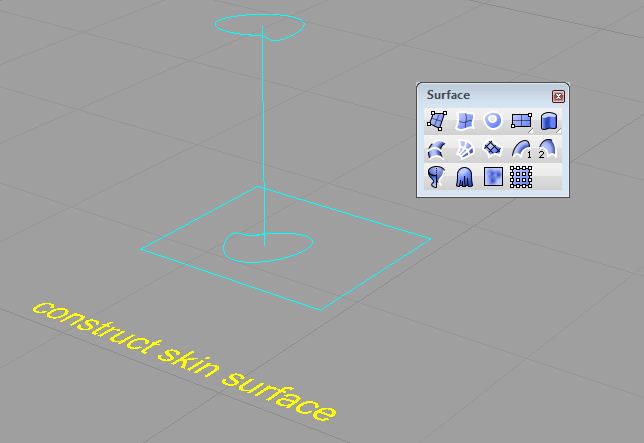 |
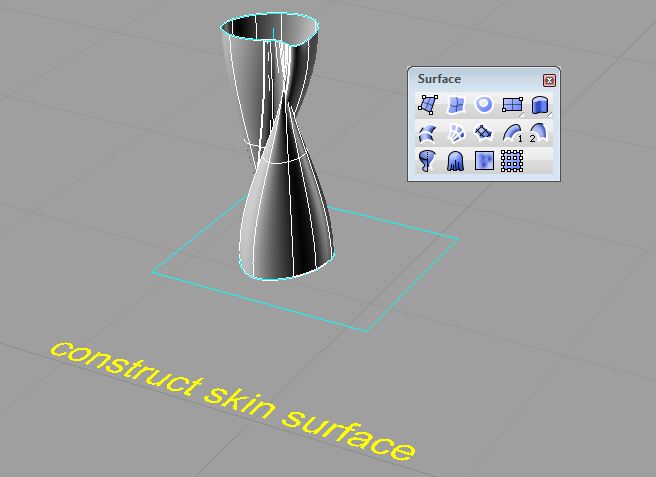 |
| The Sweep 1 rail is selected for the example above. | Select the two profile curves and enter to bring up the options dialog, enter again to complete the surface. |
 |
 |
| Select the Sweep 2 Rails icon | select the profile curves |
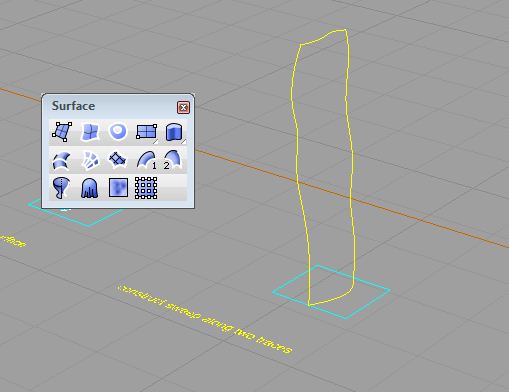 |
 |
| select the end curves | Press enter to bring up the options dialog then OK to genterate the surface. |
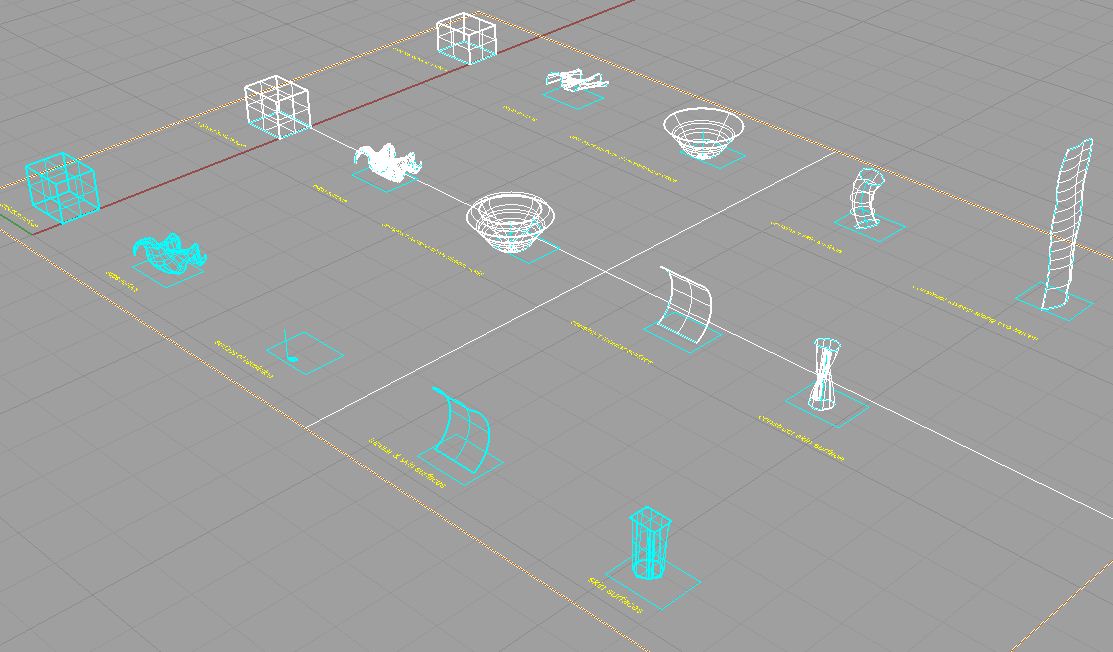 |
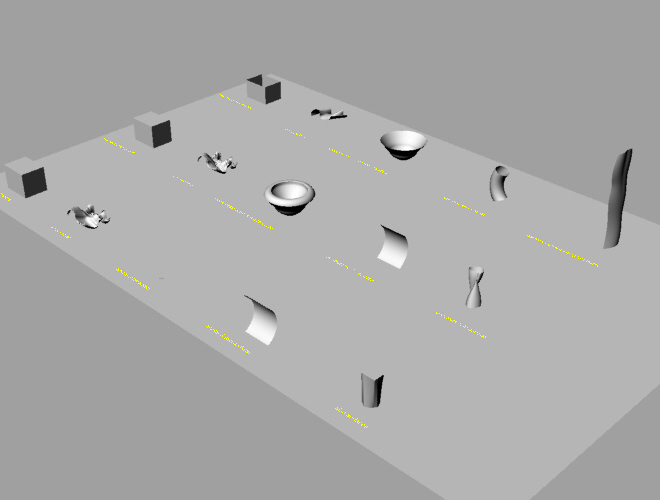 |
| surfaces in wireframe | surfaces rendered in Rhino renderer |
2. Coordinate Systems in Rhino
When drawing in Rhino, objects are snapped into a 2D invisible plane called a Construction Plane or CPlane. In perspective view if you are near the origin of the model space and grid is turned on (default) you can see the CPlane as the grid with the X and Y coordinates represented as red and green lines on this grid respectively. In the bottom left of this image is also an icon that shows the Global Coordinate System relative to the view window.
CPlane = Construction
Plane, the
invisible 2D plane which data points are snapped to. Changes relative
to the different views.
Global Coordinate System = Represents the XYZ orientation of the model.
Does not change relative to the different views or CPlanes. By default,
it is co-planar with the CPlanes.
5. Manipulating CPlanes and coordinate systems.
1. CPlanes in Rhino can be moved or rotated to any orientation to allow for better control of drawing in the model space
Setting CPlanes in Rhino
- Click and hold on the icon in the Main button bar called Set CPlane : origin to open up the Coordinate System bar as its own window. Then Click and hold the first icon in that bar to open up the Set CPlane bar as another independent window.
In perspective view draw a simple box, notice how the data points defining its length and width default to the Grid of the CPlane. Now draw another box starting in the side view away from the origin, notice its position once extuded in the Perspective view off of the Perspective CPlane.
| Box drawn on CPlane in Perspetive view. | Box drawn on CPlane in Right view, is not snapped to perspective grid plane. |
1.1 Translating the CPlane
Click on the first icon in the Set CPlane menu box labeled Set CPlane Origin.
Then move the Origin of the CPlane in the perspective view anywhere in the model, even snapping to objects or other points. Now drawing in Perspective view will snap all data points to this new construction plane.
Moving origin to a snap point on another object.
At anytime click the icon labeled Previous CPlane to navigate changes made in the CPlane.
Returns to last Construction Plane used.
Use the Second icon labeled Set CPlane Elevation to just move the CPlane in its relative Z axis, and click to accept.
1.2 Rotating the CPlane
Use Set CPlane: Rotate to rotate the Perspective CPlane 90 degress about the Y axis.
| Choose Set CPlane: Rotate with the Perspective view selected. | Hit enter to set the rotation axis at the origin. |
| With ortho on choose a point in Top view above the origin to set the axis. | In Front view click to the right with ortho to set the start rotation. |
| Then click above to rotate the CPlane 90 degrees. | Now in the Perspective view you can see the grid is oriented in the ZY plane. |
Return to the original CPlane by clicking on the Previous CPlane icon.
Next use the Set CPlane by 3 points icon to create an orientation relative to a diagonal on the box.
| With Perspective view selected click Set CPlane by 3 Points | With snaps on click on one corner of the box to set the origin |
| Click on another corner to set the X axis | Then click on a third corner diagonal from the others to set the Y axis |
| This sets the CPlane through the box diagonally. | Drawing another box in Perspective view. |
Other methods of manipulating CPlanes.
Set CPlane to Object
Sets the CPlane in-line with a part of an object, with the origin at
the object's center.
Set CPlane to Surface
Sets the CPlane tangent to a point on an object's surface.
Set CPlane Perpendicular
to Curve
Sets the CPlane's X and Y axes perpendicular to a point on a curve.
Set CPlane to View
Creates a CPlane relative to the camera's viewing angle
2.1 Organizing created Coordinate Planes.
To save and load CPlanes.
| Select the view and click Named CPlanes... | this brings up the Named CPlanes dialog box |
| Click Save and type in a name for the CPlane then hit OK | now the CPlane "Diagonal_1" can be referred back to later on. |
| Alternately you can click the Save CPlane by Name icon, type a name and press enter to save the selected view's CPlane. |
The Named CPlanes dialog
box can be
used to restore saved CPlanes to the selected view by choosing the view
and clicking Restore.
the highlighted CPlane is displayed in the view window as colored
arrows.
Clicking Restore applies the selected CPlane to the Viewport.
An alternate method to this is to right click the Save CPlane by name icon and type the saved CPlane's name then press enter.
2.2 Preset CPlanes.
These six icons in the bottom right of the button bar will apply a
CPlane to the selected view that is relative to
the Global Coordinates :Top, Bottom, Front, Back, Right, Left
orientation respectively. This is an effective way
to pull up normally used construction planes quickly and easily in the
model space.
2.3 Mobile Construction Planes
A last method of manipulating the Construction Planes is to attach it to an object and have it always update relative to that object.
| In Perspective View use the Previous CPlane icon to return to the default. | In the Construction Plane tool box click Set Mobile Construction Plane |
| Select the diagonal box and press "A" enter to attach | select one corner on the box to set the origin |
| Select the other two corners to set the X and Y axes | Press enter for automatic updates to the CPlane. |
| Rotating the object rotates the attached CPlane as well | Translating the object will translate the CPlane |
3. Exploring Surfaces through Alegraic Expressions.
Copy the file SARC-Classes\ARCH2710-Mark-FAL2023\Examples\surfWaves\waveSurf.gh onto your desktop.
Open a new Rhino file. Enter Grasshopper by typing in "Grasshopper" at the command prompt.
Within/Grasshopper File/Open the file hyperbolicP.gh.
Place a point at the location -5,-5,0 and one at 5, 5, 0.
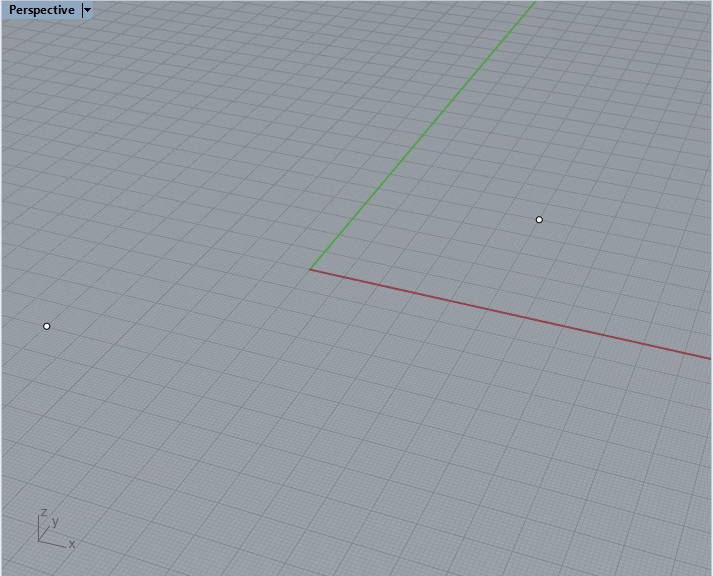
Within Grasshopper, right-mouse click the "Upper Right PT XY Plane" symbol and use the "set one point" option to set the point to the one 5, 5, 0 in Rhino.
Within Grasshopper, select the "Lower Left PT XY Plane" symbol use the "set one point" option to set the point to the one at -5, -5, 0 in Rhino.
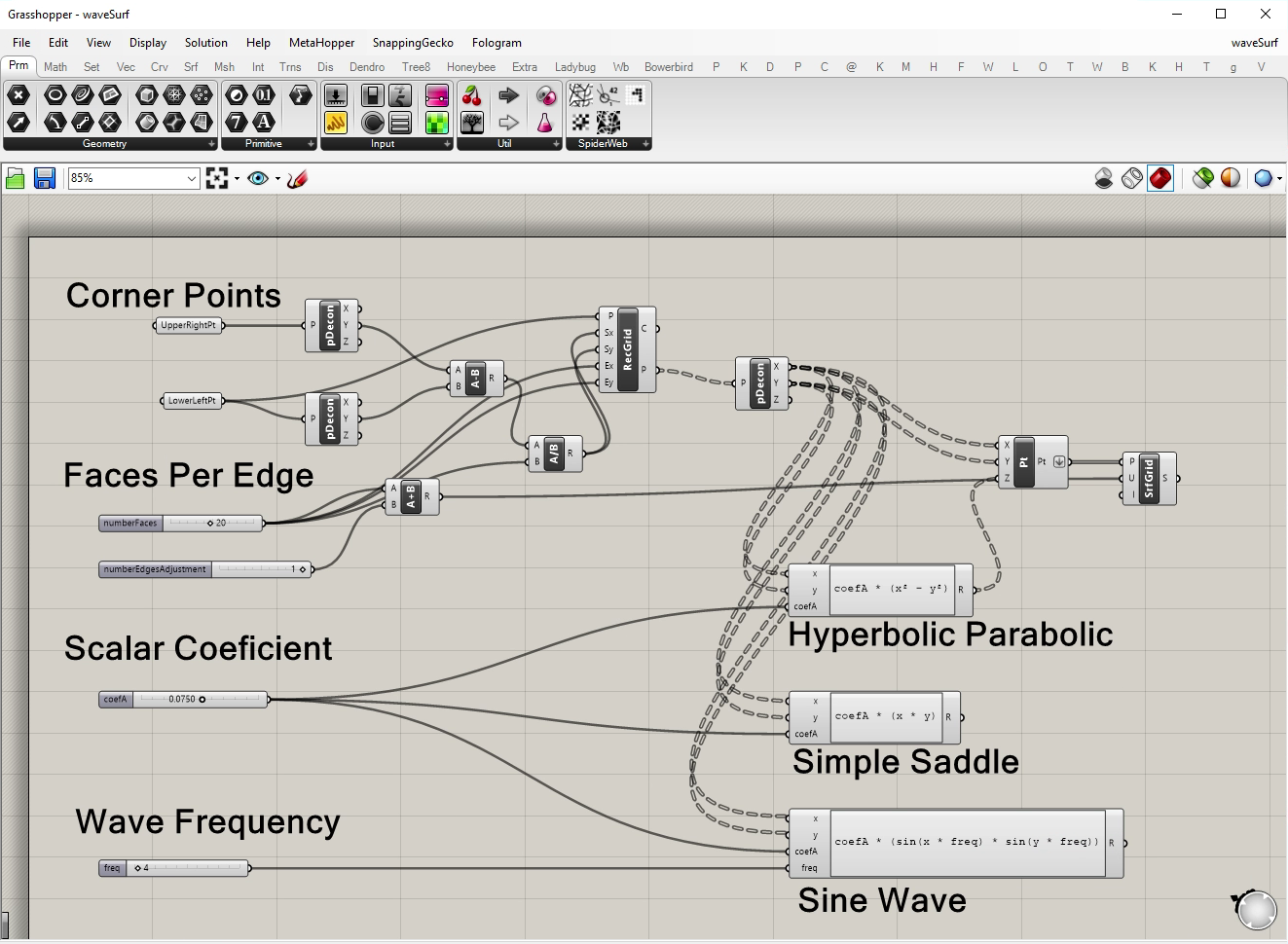
The algebraic expression creates the following surface:

Adjust parameters to control the representation of the hyperbolic parabolic surface that is generated.
Take the output of the "Simple Saddle Surface" expression and subsitute it for the output of the Hyperbolic Parabolic Surface" expression as the value of "Z" input into far right "Pt" component inside Grasshopper. The algebraic expression creates the following surface:
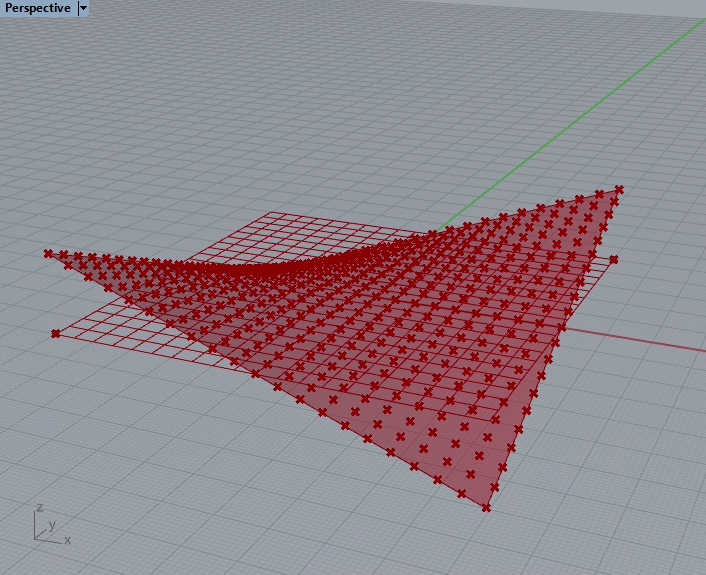
Try some alternative algebraic expressions, such as coefA*(sin(x * freq) + sin(y)), or coefA*(sin(x * freq)), and alternative values for the number slider for coeficient A.
For example, if the two corner points inside Rhino are placed at -5, -5, 0 and 5, 5, 0, and frequency slider value is set to 4 in thealgebraic expression is coefA*(sin(x * freq) + sin(y * freq)). Change the input value of coefA to 1.1 and input value of freq to 8 and see what happens.
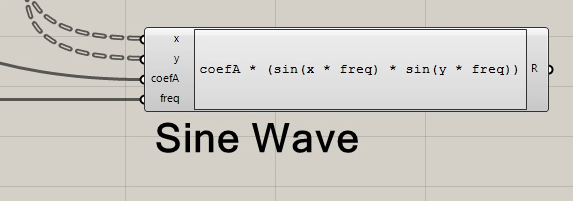
then the resulting surface would appear as follows:
